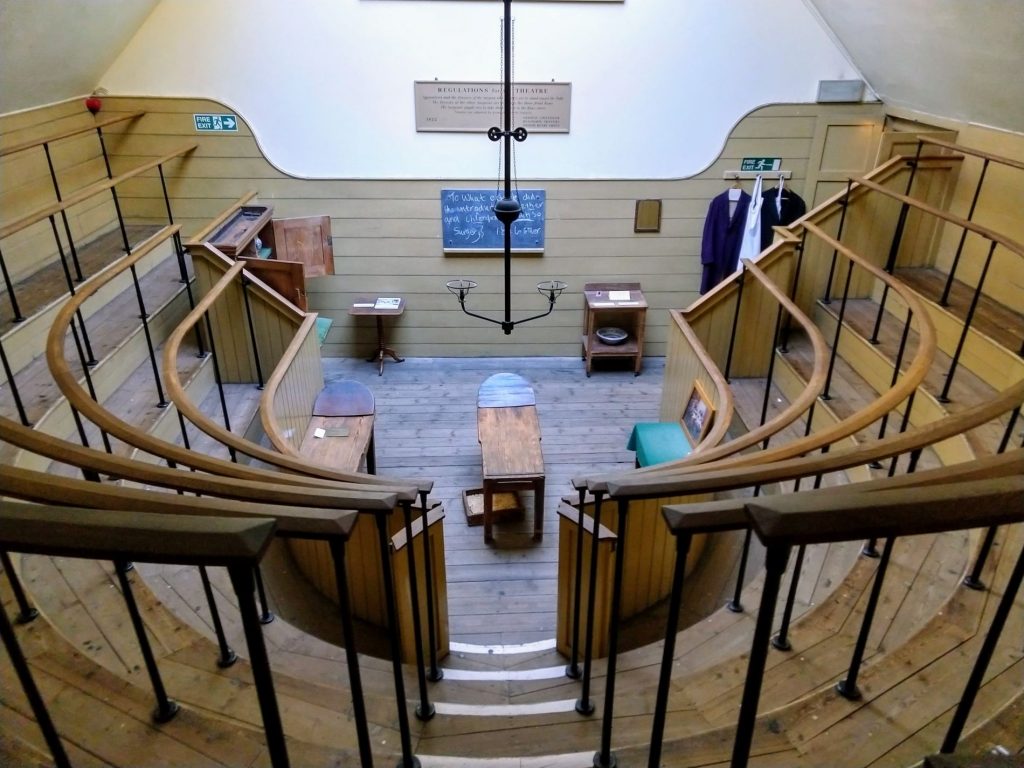We’ve made a move across the big pond and I started a nursing job in the UK. I’ve been a nurse in the US for about 5 years and have gotten qualified in the UK at the end of last year. I’m so happy that my job is in the Operating Room since it was my most recent job from the States. My only other OR experience came from Vidant Medical Center in North Carolina. Even if you just switch hospitals in the US, there will be plenty of differences between the 2, and likewise is true within the UK. So my comparisons are based on 1 hospital in the US vs. the 1 I’m working in the UK, so it’s good to keep that in mind. Other hospitals in the UK could be different, just to be clear.
1. Consultants
This is equivalent to what we call attending physicians. Consultant is not reserved for surgeons though, just any senior hospital-based physician or surgeon that have completed the training in their specialty. A primary care physician/family medical doctor, is a GP (General Practitioner) here.
2. Mr. and Mrs.
When a doctor comes to a certain level through their surgery rotations (now when that happens, I’m not exactly sure), they are referred to as “Mr.” or “Mrs.” Prior to this level, they are “Doctor.” This dates back in time when surgeons were untrained barbers and butchers that did not go to medical school. It was usually just an apprenticeship. The tradition stuck, so now a surgeon looks forward to not being called a doctor again! How ironic huh? I introduced myself to a surgeon and I asked if he was “Doctor Smith” (for example), in which his response was “Yes, I’m Mister Smith”. In this beginning time of my job here, I did not know about this difference!
3. Anaesthetist
This is the anesthesiologist. These guys do all the intubations, stay in the room the whole time, and there is one to every OR. An anesthesiologist at home would have 4 or 5 OR’s they were responsible for, but have a Certified Registered Nurse Anesthetist (CRNA) in each room.
4. The Scrub Nurse Role
The scrub takes care of the specimen at the end of the case, finishes documenting the name of the procedure, how much local, type of dressings, etc AND gives report to PACU. Most scrubs are nurses, but health care assistants are able to scrub if they have taken an extra course. Circulators are nurses and healthcare assistants. Most of the time when someone is scrubbing for the case, they do not get relieved for a break usually, they just stay scrubbed until the case is finished and eat after.
5. Operating Room Practitioner (ODP)
An ODP is a different degree that we don’t have in America. Likewise, they don’t have CRNA’s here. An ODP works in perioperative care, so they can assist the anesthetist, scrub, or in the post anesthesia recovery units. When they are assisting anesthesia, they are the ones that bring the patient into the room, confirm the consent is signed correctly, and ask the interview questions such as the last time they have eaten/drinken, allergies, any metal work in the body, etc. I do miss meeting the patient and doing my own assessment prior to the patient rolling into theatres. The circulator and scrub roles don’t usually get to see the patient while they are awake still.
6. Charge Nurse
Each theatre has a scrub nurse “sister” in charge, plus another scrub and a circulator. Usually 3 staff minimum are in each theatre + an ODP that assists the anesthetist. What we would call the Charge Nurse at home, is called the Coordinator for the day, as in they are not assigned to a room but manage all of them. Scrub nurses rotate scrubbing for the cases too, one person does not do all the cases for the day.
7. Anesthesia Room
Instead of the patient going straight into the OR to be put to sleep, there is a room connected to the OR called the anesthetic room. Once they’ve been put to sleep and all the lines have been placed, they are rolled into theatres. This benefits the patient in that the room is smaller with less equipment, so it’s not as daunting. When the operation is finished, they exit through another set of doors, so it’s always a one way flow in that they enter through one and exit another. The only downside of this to me is that it requires more manual handling, because we always have to move the patient over. If they are able at home, they slide themselves over prior to being put to sleep.
8. OR Start Times
The early shift begins at 8AM, and the idea is to get the patient in by 8:30 AM vs. the 7 AM shift and in the room by 7:30 AM at home. The later start gives the doctors and anesthesia time to do rounds on the patients without being there so early. In America, I feel like OR mornings are super early compared to here! I enjoy the sleep in as I wake up over an hour later than if I were at home.
9. OR Masks
Only the people that are scrubbed, or in the Orthopedic OR, wear masks. I felt like my face was naked without one during cases at first, but now I’m used to it.
10. No Kick Buckets
The scrub nurse keeps the dirty sponges on their table. The sponges come in packs of 5, and when 5 become dirty they can be thrown into a clear bag, sealed up and removed from the count. If it’s a bigger more emergent case, they can be thrown into a basin bowl on a stand. One positive side to no kick buckets is the circulator doesn’t have to bend down to sort out sponges in a sponge counting bag.
11. Swabs
Sponges. I had to get used to this term because when I first hear “swab,” I think about culturing something, which they use the same term for. Small swabs are our 4×8’s/raytex, long swabs are a bigger version of a 4×8, and Abdo (Abdominal) swabs are a bigger version of our Lap sponges.
12. Gowning and Gloving
No gowns are opened onto the sterile table for staff that are scrubbing in. There is a clean area with sinks inside the OR where you do all gowning and gloving. Also interesting is that the doctors gown themselves! Are American surgeons too spoiled?
13. Time Out
Often referred to as the “WHO”. When it’s time for the “time out” to verify the correct details, I always hear “Shall we do a WHO?”. It comes from the World Health Organization Surgical Safety Checklist. Another difference is that this is done before prepping or draping the patient.
14. No Case Carts
Instrument sets and trays are pulled by us, the OR staff. When we are finished with the case, there is a dirty room connected to the theatre with a cart that all the trays are placed in. Someone from Hospital Sterilisation and Decontamination Unit (HSDU) come to collect these directly from each OR. If your sets are open and preparing for a case in the OR, no one should be coming in and out from the dirty hallway.
15. Full Counts
The instrument recipe sheet that comes with the instrument set is what we use for our counts. Even if it is a case that it would be impossible to lose anything, the full set is still counted…even for an eye case!! The small counts are written on a dry erase board so the scrub nurse can easily visualize as well.
16. Tucking Arms
The arms are tucked for about all the cases I’ve seen, unless we need access to the arm for the operation. At home they would always be out on the arm boards if it wasn’t necessary to tuck. Arm boards aren’t even kept in the rooms or on the OR tables. When the arms are tucked, a draw sheet is not used, but a Chux incontinent pad is.
17. No Charging for Supplies
No matter what you open for the case, there’s not a consumption page that you have to update to charge the patient, because the supplies are already paid for. This is due to being a public hospital though. I like not having to keep up with this part.
18. Flying Squad Blood
This refers to O negative emergency blood. We keep a few units in a small fridge in theatres for life threatening cases.
19. Flowtrons
SCD’s (sequential compression devices).
20. Plate
A plate is the bovie pad. Sorry, if you don’t work in the OR you probably don’t know what I’m referring to. It’s the sticky pad we put on patients that connects to a machine for diathermy to help control bleeding.
21. Tea Breaks
The Brits take their tea breaks very seriously. It doesn’t always happen, but usually we get a proper morning and afternoon break in addition to our 30 minute lunch. With 3 staff to a room usually, it makes it easier for each room to manage this without someone coming in to relieve us.

Picture of The Old Operating Theatre Museum in London: the oldest surviving operating theatre in Europe. You can see how the name “theatre” came about.
Which is the most interesting? I hope those of you from the OR will enjoy this one!
If you want to read more about nursing differences, check out 25 Differences for an American Nurse Working in the UK, and the process it took to get my license in the UK.
Don’t forget to keep up with us and follow us on Instagram and Facebook for what we’re up to now!

6 Comments
Brooke, thanks for sharing your experience. I’ve enjoyed your post
You are welcome, I'm happy you enjoyed it! It has been very interesting with so many new things to learn.
Hi Brooke, What are the lab values that are different in England specifically? For example, Hb, WBC, RBC, platelets. Not an exhaustive list, just anything major you can think of off the top of your head. I'm finding conflicting info on the internet. I can't tell you how much I appreciate any tidbit of information. Thanks, Patricia
The only major one that I noticed was different from the US was how they measure blood glucose levels. Their values are in a different measurement of some kind of molar concentration. A normal range would be about 4 to 7 mmol/L. Hope this helps!
I am a PACU nurse in the US, considering taking a nursing job in UK. How is PACU different in UK vs US?
I didn't find it much different in my opinion. The scrub nurse comes out and gives report to the PACU nurse on the surgery part. The anesthesiologist and their assistant are the ones who bring the patient out to PACU and give their report. This is what I observed at least. I think you would find it comparable!